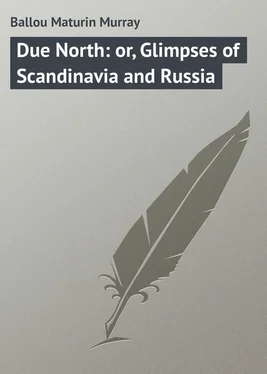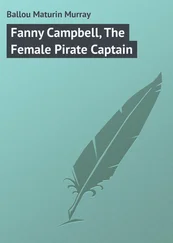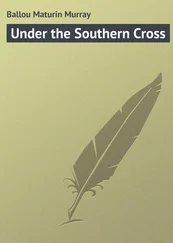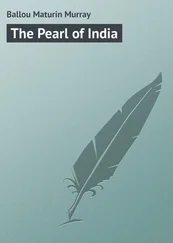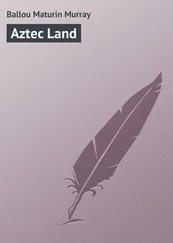Maturin Ballou - Due North - or, Glimpses of Scandinavia and Russia
Здесь есть возможность читать онлайн «Maturin Ballou - Due North - or, Glimpses of Scandinavia and Russia» — ознакомительный отрывок электронной книги совершенно бесплатно, а после прочтения отрывка купить полную версию. В некоторых случаях можно слушать аудио, скачать через торрент в формате fb2 и присутствует краткое содержание. Жанр: foreign_prose, Путешествия и география, на английском языке. Описание произведения, (предисловие) а так же отзывы посетителей доступны на портале библиотеки ЛибКат.
- Название:Due North: or, Glimpses of Scandinavia and Russia
- Автор:
- Жанр:
- Год:неизвестен
- ISBN:нет данных
- Рейтинг книги:3 / 5. Голосов: 1
-
Избранное:Добавить в избранное
- Отзывы:
-
Ваша оценка:
- 60
- 1
- 2
- 3
- 4
- 5
Due North: or, Glimpses of Scandinavia and Russia: краткое содержание, описание и аннотация
Предлагаем к чтению аннотацию, описание, краткое содержание или предисловие (зависит от того, что написал сам автор книги «Due North: or, Glimpses of Scandinavia and Russia»). Если вы не нашли необходимую информацию о книге — напишите в комментариях, мы постараемся отыскать её.
Due North: or, Glimpses of Scandinavia and Russia — читать онлайн ознакомительный отрывок
Ниже представлен текст книги, разбитый по страницам. Система сохранения места последней прочитанной страницы, позволяет с удобством читать онлайн бесплатно книгу «Due North: or, Glimpses of Scandinavia and Russia», без необходимости каждый раз заново искать на чём Вы остановились. Поставьте закладку, и сможете в любой момент перейти на страницу, на которой закончили чтение.
Интервал:
Закладка:
The streets of the city are quite broad, most of them running at right angles with each other. The houses are generally of brick, stuccoed, though there are some of stone, and all have the effect of stone structures. There was once a richly endowed cathedral here, where James I. of England was married to Anne of Denmark in 1589, but it was destroyed by fire, which element has completely devastated the place at different periods, so that the present aspect is one of a substantial modern character. The old wooden houses have almost entirely disappeared. The present cathedral is in the shape of a Greek cross, but it is of no special interest. Over the altar is a painting by a German artist representing our Saviour in the Garden of Gethsemane, a work of much more than ordinary merit. The inhabitants of Christiania are almost exclusively Protestants.
The University founded by Frederick VI. in 1811 is a plain but massive structure, the front ornamented with Corinthian pillars of polished red granite. It accommodates at the present writing some nine hundred students, the tuition being free to all native applicants suitably prepared; it contains also a noble library of over two hundred thousand volumes, besides many manuscripts of inestimable value. The library is freely open even to strangers under very simple restrictions. The University also contains an extensive Museum of Zoölogy and Geology, which in the departments of the bronze and iron periods excels even the admirable one at Copenhagen. Christiania has a Naval, a Military, and an Art school, a Lunatic Asylum, an Astronomical Observatory, and various charitable institutions; nor should we forget to mention its admirably conducted Botanical Garden situated about a mile from the town, containing among other interesting varieties a very finely-arranged collection of Alpine plants from Spitzbergen and Iceland. The town has its Casino, Tivoli, or whatever we please to call it; the good citizens here have named it the Klinkenberg. It is a place of out-door amusement for old and young, where grown up children ride wooden-horses and participate in childish games with apparently as much zest as the little ones. Here we found peep-shows, pistol-galleries, Russian slides, a small theatre, and cafés where were dispensed beer, music, and Swedish punch, – this last very sweet and very intoxicating! The acrobat, with his two small boys in silver-spangles and flesh-colored tights, was present and especially active, besides the conventional individual who eats tow and blows fire from his mouth. On the occasion of our visit the last named individual came to grief, and burned his nether lip severely.
The commerce of Christiania is increasing annually. Over two thousand vessels were entered at its custom house during the year 1885. There are regular lines of steamers established between here and London, Hull, Glasgow, Copenhagen, and other ports, which transact a large amount of business in the freight department, with a considerable incidental passenger trade. The harbor is frozen over at least three months of the year, though that of Hammerfest, situated a thousand miles farther north on the coast of Norway, is never closed by ice, owing to the genial influence of the Gulf Stream, – an agent so potent as to modify the temperature of the entire coast of Scandinavia on its western border. Wenham Lake Ice, which was originally and for some years shipped from Massachusetts to England, now comes direct from the Christiania fjord! An English company has long owned a lake near Dröbak, which yields them an ample supply of ice annually. The London ice-carts still bear the name of "Wenham Lake," but the ice comes from Norway. We were told that the quantity shipped for use in England increases yearly as ice grows to be more and more of a domestic necessity.
The Storthing's Hus is quite a handsome and imposing building, of original design in the Romanesque and Byzantine style, facing the Carl Johannes Square, the largest open area in the city. It was finished and occupied in 1866. The Market Place is adorned with a marble statue of Christian IV. Another fine square is the Eidsvolds Plads, planted with choice trees and carpeted with intensely bright greensward. The chief street is the Carl Johannes Gade, a broad boulevard extending from the railroad station to the King's Palace, half way between which stands the imposing structure of the University. Opposite this edifice is the Public Garden, where an out-door concert is given during the summer evenings by a military band. In a large wooden building behind the University is kept that great unrivalled curiosity, the Viking ship, a souvenir of more than nine hundred years ago. The blue clay of the district where it was exhumed in 1880, a few miles south from Christiania at Gokstad, has preserved it nearly intact. The men who built the graceful lines of this now crumbling vessel, "in some remote and dateless day," knew quite as much of the principles of marine architecture as do our modern shipwrights of to-day. This interesting relic, doubtless the oldest ship in the world, once served the Vikings, its masters, as a war-craft. It is eighty feet long by sixteen wide, and is about six feet deep from gunwale to keel. Seventy shields, spears, and other war equipments recovered with the hull show that it was designed for that number of fighting men. A curious thrill is felt by one while regarding these ancient weapons and armor, accompanied by a wish that they might speak and reveal their long-hidden story. In such vessels as this the dauntless Northmen made voyages to every country in Europe, and as is confidently believed they crossed the Atlantic, discovering North America centuries before the name of Columbus was known. Ignoring the halo of romance and chivalry which the poets have thrown about the valiant Vikings and their followers, one thing we are compelled to admit: they were superb marine architects. Ten centuries of progressive civilization have served to produce none better. Some of the arts and sciences may and do exhibit great progress in excellence, but shipbuilding is not among them. We build bigger but not better vessels. This ancient galley of oak, in the beauty of its lines, its adaptability for speed, and its general sea-worthiness, cannot be surpassed by our best naval constructors to-day. An American naval officer who chanced to be present with the author, declared that there were points about this exhumed vessel which indicated retrogression rather than progress on the part of modern builders of sea-going craft. The bent timbers on the inside are of natural growth, the sheathing boards are an inch and a half in thickness, firmly riveted, the iron bolts clinched on either end. Near the gunwales the bolts are of oak. The planking slightly overlaps, being bevelled for the purpose; that is, the hull is what we technically call clinker-built, and would probably draw about four feet of water in a sea-going trim. The bow and stern are of the same pointed shape, and rise a considerable distance above the waist, giving the vessel what sailors term a deep sheer inboard.
The burial of this ship so many centuries ago was simply in accordance with the custom of those days. When any great sea-king perished, he was enclosed in the cabin of his galley, and either sunk in the ocean or buried with his vessel and all of its war-like appointments upon the nearest suitable spot of land. In this instance, as has been intimated, weapons of war were buried with the deceased, just as our Indian tribes of western America do to this day. Tombs dating much farther back than the period when this sepulchral ship was buried have been opened in both Norway and Sweden, showing that the dead were sometimes burned and sometimes buried in coffins. The cinerary urns were usually found to have been either of terra-cotta or of bronze, – seldom, however, of the latter material. In these tombs trinkets and weapons were also discovered, with the skeletons of horses and other domestic animals. To the period of these burials belong the earliest Runic inscriptions, differing materially from those which were in use a few centuries later. One may believe much or little of the extravagant stories handed down by tradition concerning these ancient Scandinavians, but certainly we have tangible evidence in these tombs that some of the legends are literally true. We are told that when a chieftain died in battle, not only were his war-horse, his gold and silver plate, and his money placed upon his funeral pyre, but that a guard of honor from among his followers slew themselves, that he might enter the sacred halls of Odin properly attended. The more elevated the chief the larger was the number who must sacrifice themselves as his escort to the land of bliss. So infinite was the reliance of the Heathen horde in their strange faith, that, far from considering their fate to be a hard one, they adopted its extremest requirements with songs of joy!
Читать дальшеИнтервал:
Закладка:
Похожие книги на «Due North: or, Glimpses of Scandinavia and Russia»
Представляем Вашему вниманию похожие книги на «Due North: or, Glimpses of Scandinavia and Russia» списком для выбора. Мы отобрали схожую по названию и смыслу литературу в надежде предоставить читателям больше вариантов отыскать новые, интересные, ещё непрочитанные произведения.
Обсуждение, отзывы о книге «Due North: or, Glimpses of Scandinavia and Russia» и просто собственные мнения читателей. Оставьте ваши комментарии, напишите, что Вы думаете о произведении, его смысле или главных героях. Укажите что конкретно понравилось, а что нет, и почему Вы так считаете.
